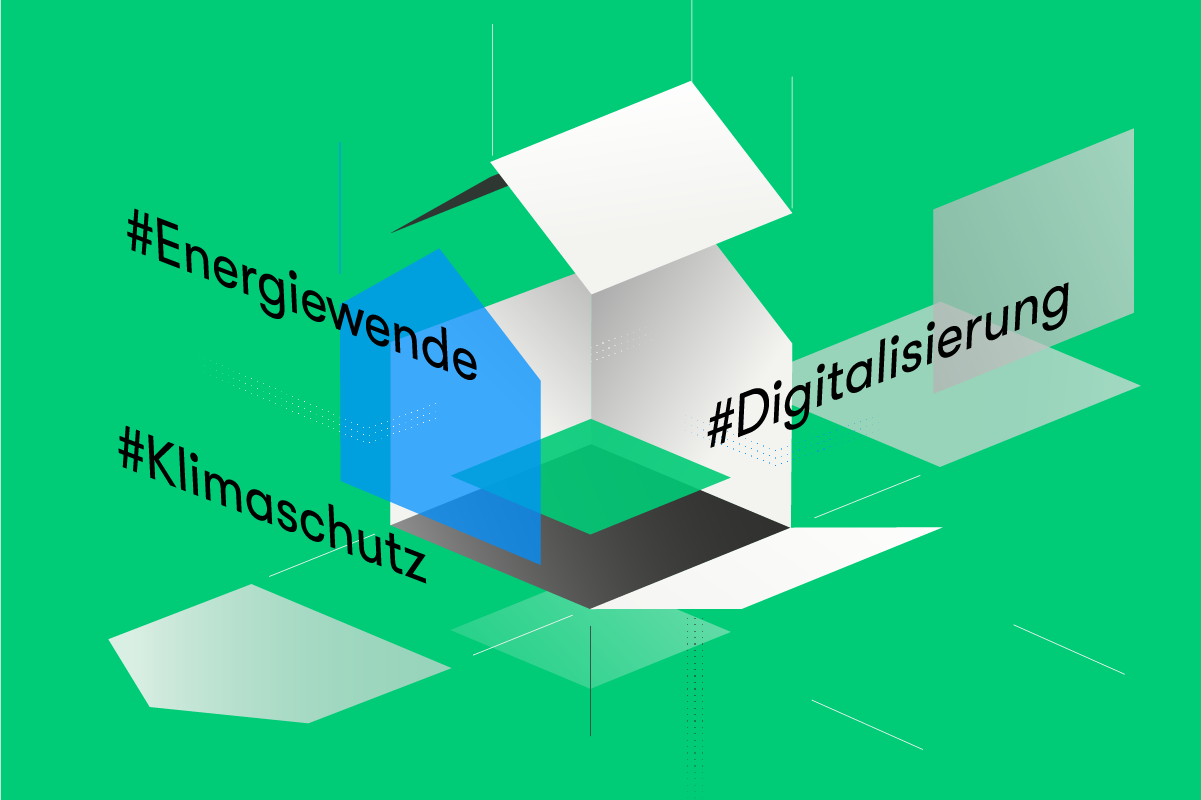Theme article

In a panel discussion organised by the noventic group as part of this year’s Berlin Energietage, EU Commission Head of Unit Stefan Moser sets out the goals pursued by the Renovation Wave and how these will affect the German housing industry. Babette Peulicke Slott from the Danish Technological Institute warns against losing sight of the resident. But how to go about that? Andreas von Wissel, Head of Product Management & Innovations at Noventic group company KALORIMETA GmbH, provides answers: you can find out here why Smart Meter Gateway digital infrastructure is the key to energy-efficient buildings.
The central aim of the Renovation Wave for buildings, launched by the EU Commission in mid-October 2020 as part of the Green Deal, is to reduce consumption in the building sector, which is one Europe’s largest sources of emissions.
As Stefan Moser points out, digitisation has great importance in relation to the current renovation rate for existing buildings and the ambitious climate targets which have been set. If digitisation helps us to capture and collect data precisely and at high frequency, we have to ask ourselves how we can use the data we collect to optimally control energy consumption in the building.
Accordingly, alongside the introduction of binding minimum standards for the energy performance of existing buildings, the establishment of a smart readiness indicator as a guideline for measuring the intelligence capability of buildings, that is, the possibility of connecting digital systems and services, forms another of the planned measures. However, for Stefan Moser it is clear that residents’ consumption behaviour is also extremely important for achieving the goals.
So how can we use the collected data to achieve optimum control of a building’s energy consumption?
(The importance of resident behaviour) is confirmed by energy anthropologist Babette Peulicke Slott. “Technology is not everything: we always have to focus on the resident,” she says. An interdisciplinary approach combines technology and anthropology and uses all available data to realize a building’s actual energy-saving potential.
Peulicke Slott notes that this allows us to address the two main problems faced in connection with building renovation: performance gap and the rebound effect. Performance Gap is the difference between pre-calculated energy savings and those actually achieved when running the building, while the rebound effect arises when residents in energy-optimized buildings increase their energy consumption, usually unconsciously,
because they just assume that they are using less. To exemplify her point, Slott cites land use plans in relation to office buildings and visualizations of energy consumption in relation to rented apartments, both of which have led to good results in Denmark. “Visualizing energy consumption data can help to reflect and reduce one’s own consumption”, the energy anthropologist points out”.
Technology is not everything – we always have to focus on the resident
Regarding the solutions digitisation provides, Andreas von Wissel stresses that these should, among other things, help to bring together sectors such as the housing industry and energy suppliers. Referring to the smart meter rollout, as an operator of intelligent measuring systems Wissel, managing director of imovis, proclaims that “We have the technology and are ready to start now. Let’s exploit the potential and take the first steps right now.”
We have the technology and we are ready to start now.__
The development of digital know-how in the industry is also a topic that should not be underestimated. “We are building up the expertise and skills needed to provide the housing industry with real help and dispel the fear of complexity”, stresses von Wissel, among various other points in the discussion round.
Watch the panel discussion here: